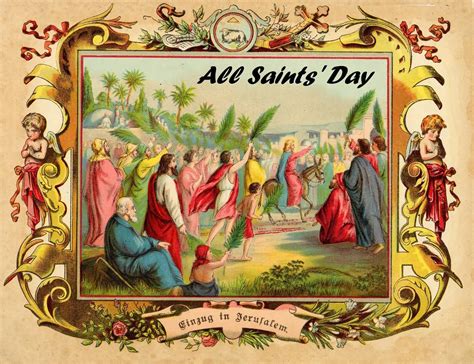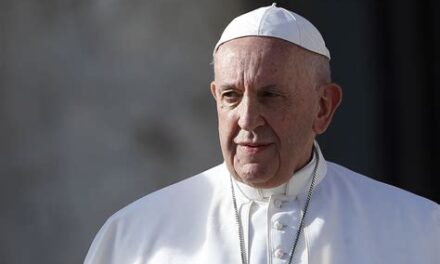There is a tendency amongst devout Christians these days to reject Halloween because of its association with scary things. This is understandable, as an association with scary things often leads to an association with evil things. But the truth is, not all of Halloween is an association with evil. Some of it is just sort of innocently pagan.
There is a difference between pagan and Satanic. There can be hints of goodness within paganism and Christianity is brilliant at embracing and transforming these hints of goodness. Halloween doesn’t have to be corrupt. In fact, there was a point in which it was an entirely Christian holiday, and I believe we can make it so again.
I don’t mean we should simply replace it with something that already exists (All Saints’ and All Souls’, both of which ought to be celebrated in all their own glory.) As a child, I remember being excited about both Halloween and All Saints’ Day, but for different reasons. And I think there’s something important about the differences.
I like to think of the three days as a Triduum celebration of humanity’s journey to Heaven. If All Saints’ Day is a celebration of the Church Triumphant and All Souls’ Day is a celebration of the Church Suffering, then I think Halloween ought to be a celebration of the Church Militant. I mean that it ought to be a celebration of our mortality.
It ought to be a celebration of our battle against evil, a celebration of our life and our inevitable death, and our hope beyond that death. I think that Halloween ought to be a celebration of the whole Earth’s yearning for Christ, in all its fallenness and folly and goodness. And this Earthly yearning for Christ actually fits in quite well with the pagan/secular traditions. It fits in quite well with pumpkins, ghosts, costumes, and even trick-or-treating.
First of all, there is no more fitting time to celebrate the mortality of humanity and humanity’s home than Autumn, when everything around us dies. And yet, the death is beautiful! It brings us radiant colors and splendid harvests. The beauty of the Earth’s death is a symbol of the beauty contained in our own deaths. We ought to celebrate that beauty. We ought to celebrate the leaves and the pumpkins and the hay and the colder weather.
We also ought to celebrate the spookiness. I don’t mean that we ought to even slightly engage in anything that borders on evil. Those haunted houses aged 18 and up are out of the question, as are horror movies meant to horrify, scenes of torture, occult practices, etc. But there is a playfulness to the dancing skeleton that I believe is healthy and good and Christian.
If we are to truly embrace our mortality, why not do so with a dancing skeleton? Death is spooky. Mortality is spooky. And rightfully so. It ought to make us a little bit uneasy. It ought to make us pause. Because we are Christians, we may rejoice, knowing that the skeleton is not the end. Indeed, perhaps that’s why he’s dancing. But before we can rejoice with the skeleton, we must acknowledge him and confront him. Halloween is the perfect time for this confrontation and embracing of the spooky.
There is also a place for the costumes. In the same way that All Saints’ Day celebrates the heroes of Heaven and All Souls’ the heroes of Purgatory, why not celebrate, on Halloween, the heroes of Earth? I think it’s lovely that so many families are dressing their children as St. Cecilia and St. Michael during this little triduum. But I think there’s some wisdom to be found in the traditional Halloween costume. Now, I’m not talking about sexy nurses. I’m talking about buffalos and princesses and pumpkins and firefighters.
Because in the same way we ought to celebrate the saints who have gone before us, we ought to celebrate the saints among us and the goodness of creation around us. We ought to allow children to find heroes and inspiration in their storybooks and in the forests and down the street. Such things give us hope as we trek along in our mortality.
But what about the candy? What about trick-or-treating? Interestingly, trick-or-treating was once a thoroughly Christian practice, children would go door to door offering prayers for their neighbors’ deceased loved ones in exchange for cakes and treats. There was frivolity and sweets involved, sure, but there was also a very spiritual gift of self. I think the way to redeem the somewhat entitled practice of trick-or-treating is to bring back that gift of self.
What would this look like in practice? I think it would be great if children started bringing something with them to the houses they visit. So if they are visiting houses of people they know well, perhaps they can bring a painted pumpkin or some sort of harvest gift. If they are visiting houses they don’t know well, perhaps we can teach them to say a prayer for the family in the house (or even sprinkle holy water on it!) Either way, we can view it more as an exchange of good cheer than a mindless collection of candy. If carolers bring the cheer of the angels and the shepherds, perhaps we can imagine trick-or-treaters bringing the cheer of that dancing skeleton.
In the end, the ways we adapt these traditions might be simple and subtle but if we are deliberate, they can make a big difference. If we are deliberate and intentional, Halloween can become a celebration of our human family and our common fight to hope (and laugh and play!) amidst the chilling reality of death.














